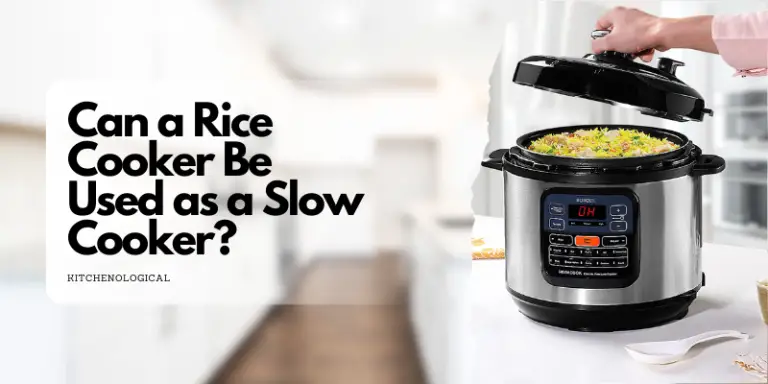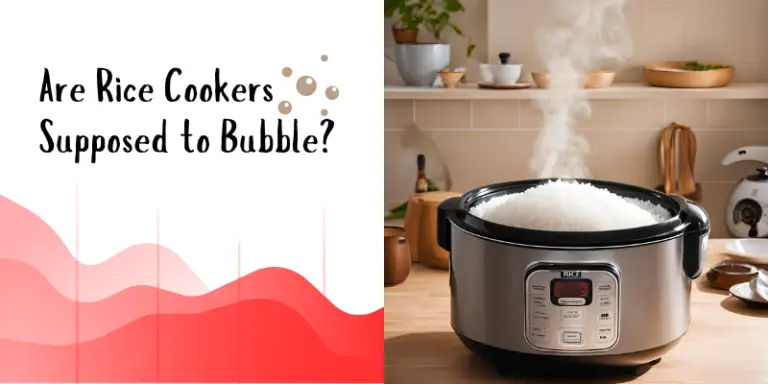We review and select products independently. Purchases through our links may earn us a small commission. Learn more.

The original sushi recipe is not too complicated to follow. Then, why does your sushi don’t look as appealing as a Japanese restaurant? Well, we would like to blame cooking tools like rice cookers and kitchen knives. It’s just that regular kitchen knives are too blunt. So, do you need a sharp knife for sushi?
Yes, every knife you use during the sushi-making process should be extremely sharp. For that, chefs prefer high-carbon steel Japanese knives like the Yanagiba, Deba, Sujihiki, or Usaba.
You can get a myriad of every knife we just mentioned or choose a specific one that would fit all your needs. But before that, you must know what type of knife a perfect sushi requires.
Can You Use A Regular Kitchen Knife For Sushi?
Regular knives don’t have the sharpness required for cutting sushi rolls perfectly. We mean, sushi is quite a simple dish. It becomes phenomenal because of the way it is thin-sliced.
The problem with a stainless steel kitchen knife is that you have to use a little force to cut through the whole sushi roll. And, if you know the basic ingredients of sushi which includes steamed fish, sticky rice, thin wrapper, etc., a little force is enough to smash the whole dish.
The end result will not have separate and appealing food sections like you saw in the picture. That can only be achieved with a sushi knife.
Here, the term “sushi knife” is actually pretty amateur. Chefs call it a sashimi knife which refers to a sharp-edged Japanese tool used for peeling raw fish. We will discuss more sashimi knives below.
But first, check out why regular kitchen knives fail to give you the perfect sushi cut.
- Doesn’t have the ideal length (300 to 330 mm).
- Mostly made of stainless steel material which reduces the sharpness of the edges.
- Steamed rice easily gets stuck on the knife while cutting.
- It must be used like a saw causing steamed veggies to get smashed up.
- Fails to cut open raw fish fillets in one go.
What Type Of Knives Should You Use For Sushi?
We at least know your regular kitchen knives don’t work for sushi, right? Now, it’s time to find the appropriate ones.
For that, let’s go back to the country which introduced sushi to the entire world. Yes, we are talking about Japan. Japan makes the best sashimi knives. You can even get yourself a whole set full of knives designed for different stages in the sushi-making process. Nonetheless, here is a list of some of the most popular sashimi knives chefs use in restaurants.
#1- Deba Bocho
Deba knives are also known as carving knives in non-Asian countries. You might have seen such knives that carve meat along the bone in a smooth way. Deba Bocho is specially designed to cut the fish fillet required for sushi.
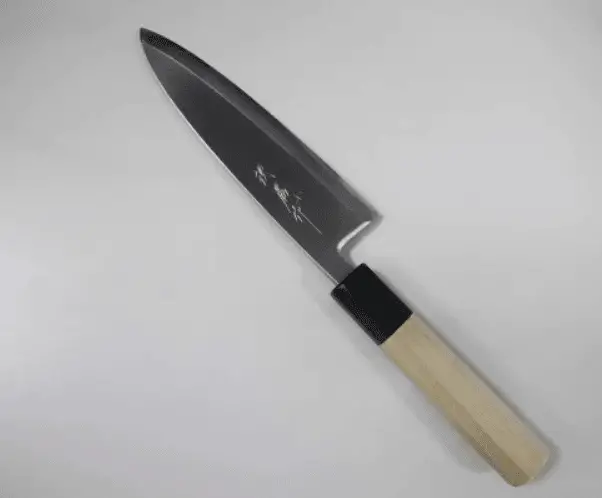
The most common fish fillets used in sushi rolls are either from tuna or salmon. These fish are expensive, and you don’t want a cheap knife to get stuck while cutting the fillets open from the bones.
The reason why Deba Bocho does this job so smoothly is because it’s heavier than a usual kitchen knife and it gives you more control regarding how you want to shape your cut.
Next, the length (9 to 12 inches) is ideal for long cuts without having to stop in the middle. Deba Bocho also does a nice job peeling off the fish scales in the initial process.
#2- Yanagiba Bocho
Once you have separated meat blocks or fillets using a Deba Bocho, it’s time to slice the blocks into thinner pieces. You can assume the cook is professional just by examining how thin the fish slices are. It’s the heart of a sushi roll.
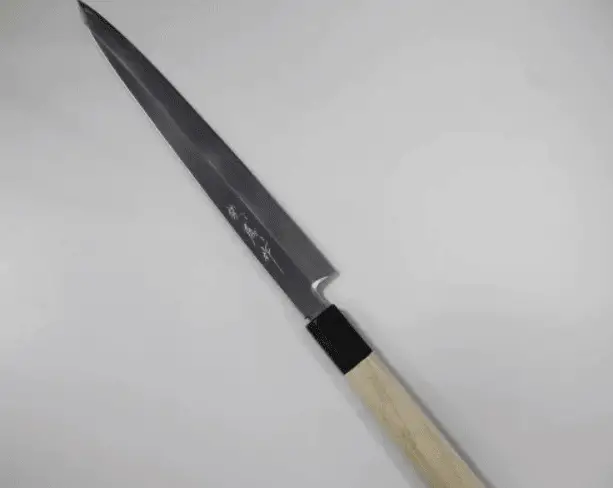
For that, you need a Yanagiba Bocho. As you can see in the picture, Yanagiba knives are single-beveled and sharp-edged. Instead of stainless steel, craftsmen use high-carbon steel to increase the sharpness even more.
These characteristics allow Yanagiba knives to cut water-thin slices from a given fillet. Chefs mostly use it for precise cutting. If you have to use force to make the knife go through a fillet, the game is over.
You will notice tearing signs on the slice, and that’s not appealing. With a Yanagiba knife, however, you can just insert the edge into the fillet and slowly pull it toward you.
Plus, it’s not-so-wide body prevents the sushi from sticking.
#3- Usaba Bocho
Usaba knives are designed for the final part of your sushi-making process. It’s called garnishing. You will have to finely chop fresh veggies like carrots, cabbages, and so on. The aim is to minimize the damage caused to the veggie slices as much as possible.

For that, Usaba knives work best. These are single-bevel knives with 210 to 240mm in length. Hence, you can manage cabbages and carrots in one go. But as you can see, it is smaller than a Yanagabi knife.
Its rectangular shape and heavy weight allow better control as we chop ingredients. You don’t have to worry about damaging the cells and causing juices to ooze out during the process. That ruins the final taste of your sushi garnishing.
#4- Sujihiki Bocho
Sujihiki is pretty similar to a Yanagiba knife. You can use it for skinning fish and cutting rolls without crushing or tearing the ingredients.
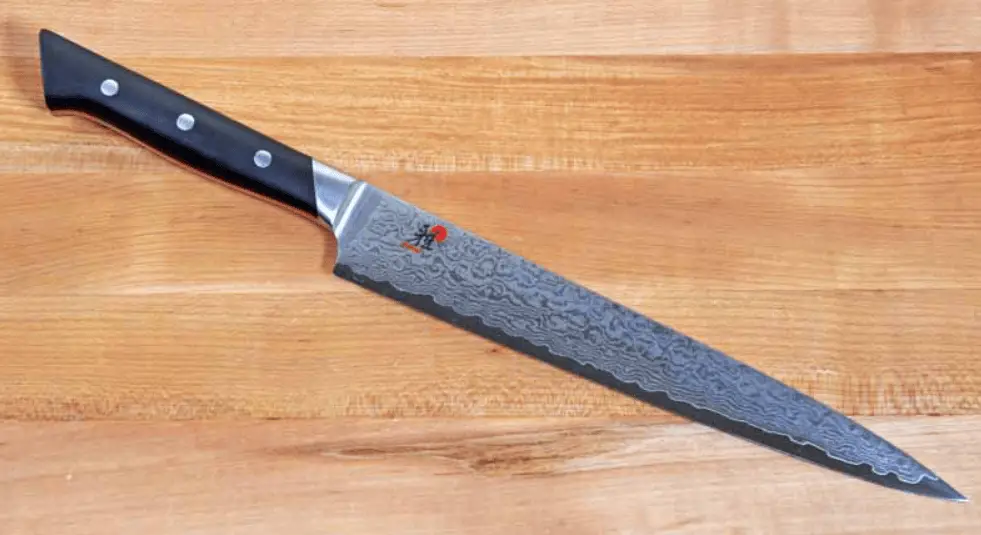
But Yanagiba is mostly used by professional chefs inside the kitchen. The knife requires some training to be held and used perfectly.
On the other hand, Sujihiki knives can be handled by an amateur cook as well. It’s double-beveled, which means it is easier to handle for an average person.
The only downside of a double-edged knife is that you feel some resistance while skinning the fish fillet due to the absence of a flat side. You can only perform straight cuts with it.
Nonetheless, Sujihiki knives are also more comfortable to hold and can be used by both left and right-handed users.
That was not the case with Yanagiba. If you are left-handed, you have to look for a customized one, which by the way, is not easily available.
So, overall, if you haven’t used Japanese sashimi knives before, start with a Sujihiki knife. Once you learn how to cut straight, switch to a Yanagabi knife.
How Do You Get The Best Sushi Cutting Experience With Sashimi Knives?
Just using the specialized sashimi knives would enhance your sushi skills to a great extent. But you can follow the tips below to get even better results from the knives.
Use White Vinegar
Sashimi knives make your sushi rolls look aesthetic. But you might face difficulty when the steamed rice is stuck in the knife’s body. It happens when the knife is relatively new. We suggest you rub some white vinegar on the knife to reduce the stickiness.
Upkeep Regularly
One problem with high-carbon steel is that it is prone to rusting. That means you have to be extra attentive while taking care of your sashimi knives.
Sometimes, when we use a knife for way too long in the kitchen, rusting becomes unavoidable. In that case, try to swipe away all the moisture from the knife. Then, apply oil to the knife to avoid a corroded edge.
Sharpen Frequently
You should sharpen the knives frequently to keep the cutting standard intact. But here’s a catch. Stainless steel knives are more difficult to sharpen compared to a carbon-steel.
Normally, kitchen knives are made of stainless steel. The main reason is its ability to resist corrosion for a long time.
But it is difficult to sharpen a stainless steel knife to the point that it can cut fish fillets swiftly. What would you do with a rust-free knife if it doesn’t cut precisely?
That’s why you should always look for high-carbon steel. The more carbon is used in the material, the easier it is to sharpen. Yes, it does require frequent oiling and other kinds of maintenance, but the precision is incomparable.
FAQs
Sushi is not just a Japanese food anymore. People all over the world are showing love for this light snack by trying to make it at home. Check out our FAQ section for more information about the best sushi or sashimi knife.
Is There A Sushi Knife For Left-Handed People?
Yes, if you are referring to a Yanagiba knife, it can be customized for a left-handed person. Yanagiba is the most famous sashimi knife. But it is single-beveled, and one knife can’t serve both right and left-handed.
Can I Use Any Sharp Knife For Sushi?
If you are a bit low on budget, any sharp knife in your kitchen will do. As long as you sharpen it separately and you can cut most of the sushi ingredients just fine. However, don’t expect a picture-perfect finish.
Why Are Japanese Knives So Popular?
Japanese knives are popular because of the craftsmanship that goes into manufacturing. The knives are thin yet heavy. You feel comfortable holding the handle, and the sharpness is unprecedented.
Conclusion
We have embraced sushi into our daily meal plan. So, why not the knives designed to make them? For preparing fish fillets, we suggest a Deba Bocho.
And, for skinning the fish fillets or making water-thin slices, get a Yanagiba/Sujihiki Bocho. If you are not keen on garnishing, you can skip the Usaba Bocho.
However, a professional sushi maker should definitely have the entire myriad of Japanese sashimi knives we discussed here. That was all. Let us know how your sushi experiment went.





